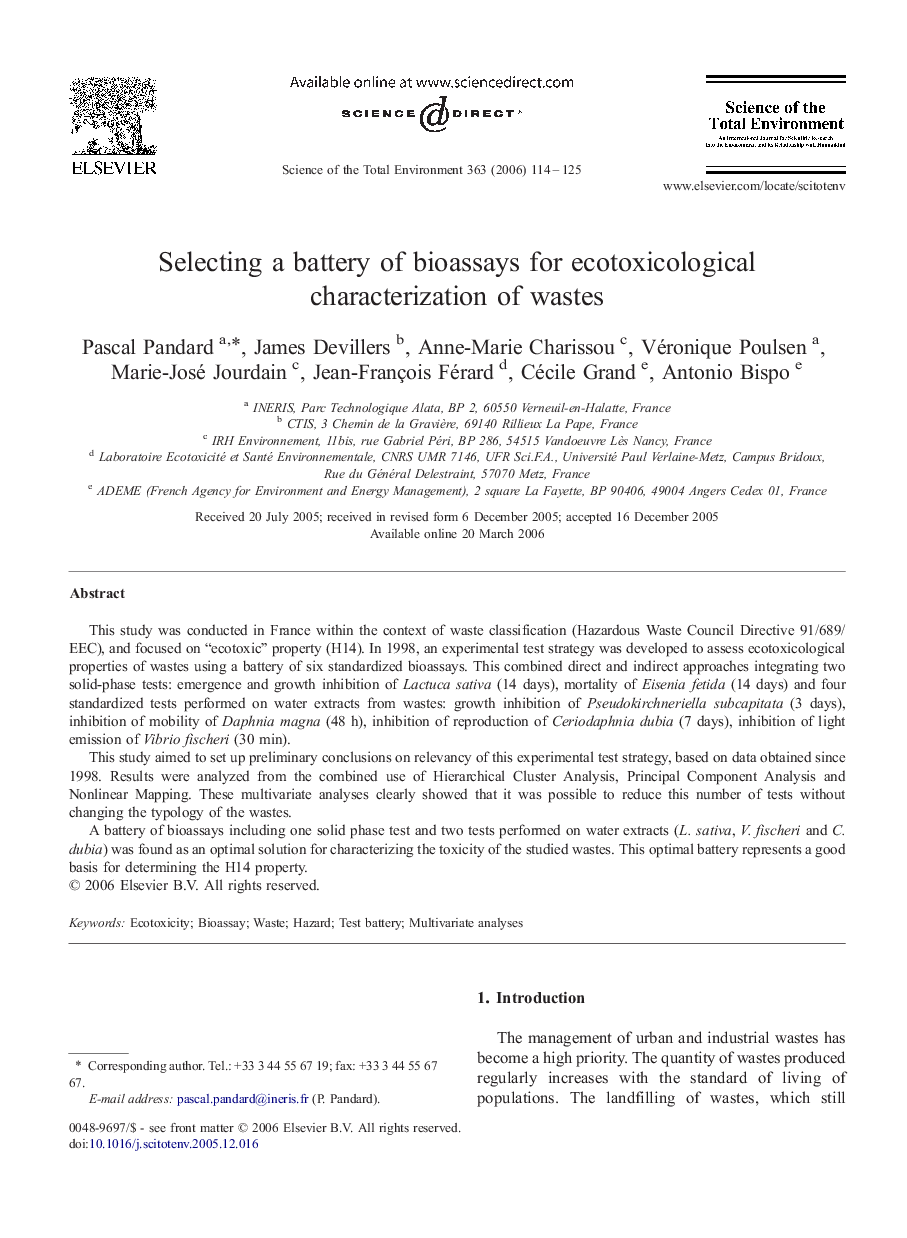| Article ID | Journal | Published Year | Pages | File Type |
|---|---|---|---|---|
| 4434268 | Science of The Total Environment | 2006 | 12 Pages |
This study was conducted in France within the context of waste classification (Hazardous Waste Council Directive 91/689/EEC), and focused on “ecotoxic” property (H14). In 1998, an experimental test strategy was developed to assess ecotoxicological properties of wastes using a battery of six standardized bioassays. This combined direct and indirect approaches integrating two solid-phase tests: emergence and growth inhibition of Lactuca sativa (14 days), mortality of Eisenia fetida (14 days) and four standardized tests performed on water extracts from wastes: growth inhibition of Pseudokirchneriella subcapitata (3 days), inhibition of mobility of Daphnia magna (48 h), inhibition of reproduction of Ceriodaphnia dubia (7 days), inhibition of light emission of Vibrio fischeri (30 min).This study aimed to set up preliminary conclusions on relevancy of this experimental test strategy, based on data obtained since 1998. Results were analyzed from the combined use of Hierarchical Cluster Analysis, Principal Component Analysis and Nonlinear Mapping. These multivariate analyses clearly showed that it was possible to reduce this number of tests without changing the typology of the wastes.A battery of bioassays including one solid phase test and two tests performed on water extracts (L. sativa, V. fischeri and C. dubia) was found as an optimal solution for characterizing the toxicity of the studied wastes. This optimal battery represents a good basis for determining the H14 property.
